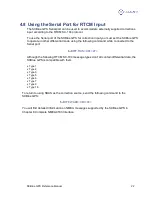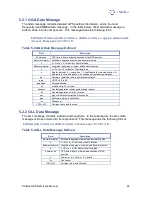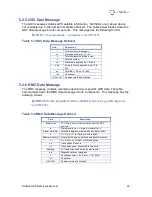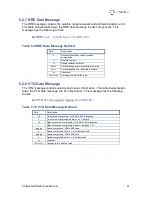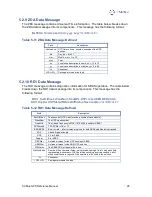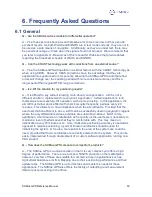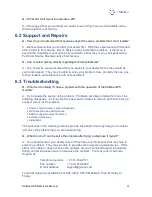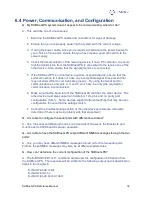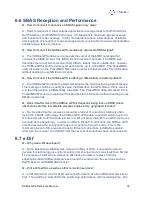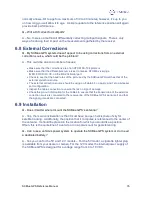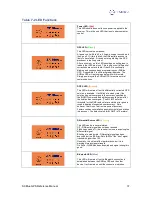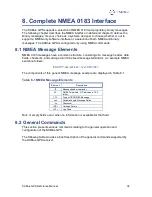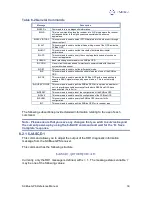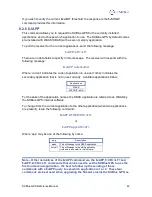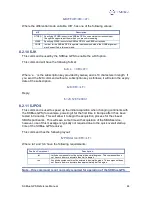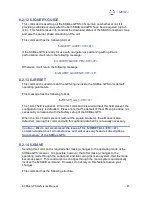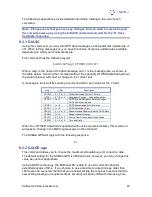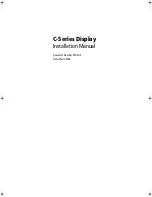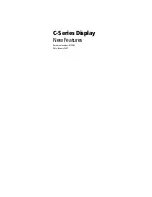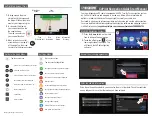
SXBlue GPS Reference Manual
34
6.6 SBAS Reception and Performance
Q - How do I know if I can receive a SBAS signal in my area?
A - Refer to Appendix C that contains approximate coverage maps for both WAAS (for
North America) and EGNOS (for Europe). It’s important to have both signal coverage
and ionospheric map coverage. In fact, it’s desirable to have a few degrees of latitude
and longitude of ionospheric map coverage around your location to ensure that satellites
available have these correctors.
Q - How do I know if the SXBlue GPS module has acquired a SBAS signal?
A - The SXBlue GPS allows you to request the output of the $RD1 message that
contains the SBAS bit error rate (BER) for both receiver channels. The BER value
describes the rate of errors received from SBAS. Ideally, this should be zero; however,
the SXBlue GPS
should provide good performance up to a 150 BER. The PocketMAX
utility discussed in the PocketMAX Manual is a useful tool that provides this information
without needing to use NMEA commands.
Q - How do I know if the SXBlue GPS is offering a differentially corrected position?
A - The SXBlue GPS outputs the GGA message as the main positioning data message.
This message contains a quality fix value that describes the GPS status. If this value is
a 2, then the position is differentially corrected. The PocketMAX utility discussed in the
PocketMAX Manual is a useful tool that provides this information without needing to use
NMEA commands.
Q - Does it matter much if the SXBlue GPS is frequently losing lock on SBAS due to
obstructions and the low satellite elevation angles at my geographic location?
A - No, provided that the receiver is receiving a full set of corrections relatively often.
Using the COAST technology, the SXBlue GPS will be able to perform well for up to 40
minutes with old correction data (similar to e-Dif, accuracy towards the end will not be as
accurate as the beginning.) In order to obtain a full set of corrections, the SXBlue GPS
antenna receives the ionospheric map over a period of a few minutes. This is the
minimum amount of time required to get a full set of corrections for SBAS operation.
After this, the receiver can COAST until the next set of corrections have been received.
6.7 e-Dif
Q – Why was e-Dif developed?
A – Once Selective Availability was removed in May of 2000, it opened the door to
develop this technology as environmental errors change much more slowly than SA did.
The purpose of e-Dif was to market an alternative to users in replace of costly
subscription-based differential services around the world where free services such as
DGPS beacon and SBAS did not exist.
Q – Will e-Dif perform as well as other correction services?
A – e-Dif will perform with a similar level of performance as other differential services at
first. There will be a slow drift to the positioning performance with increasing time. We



